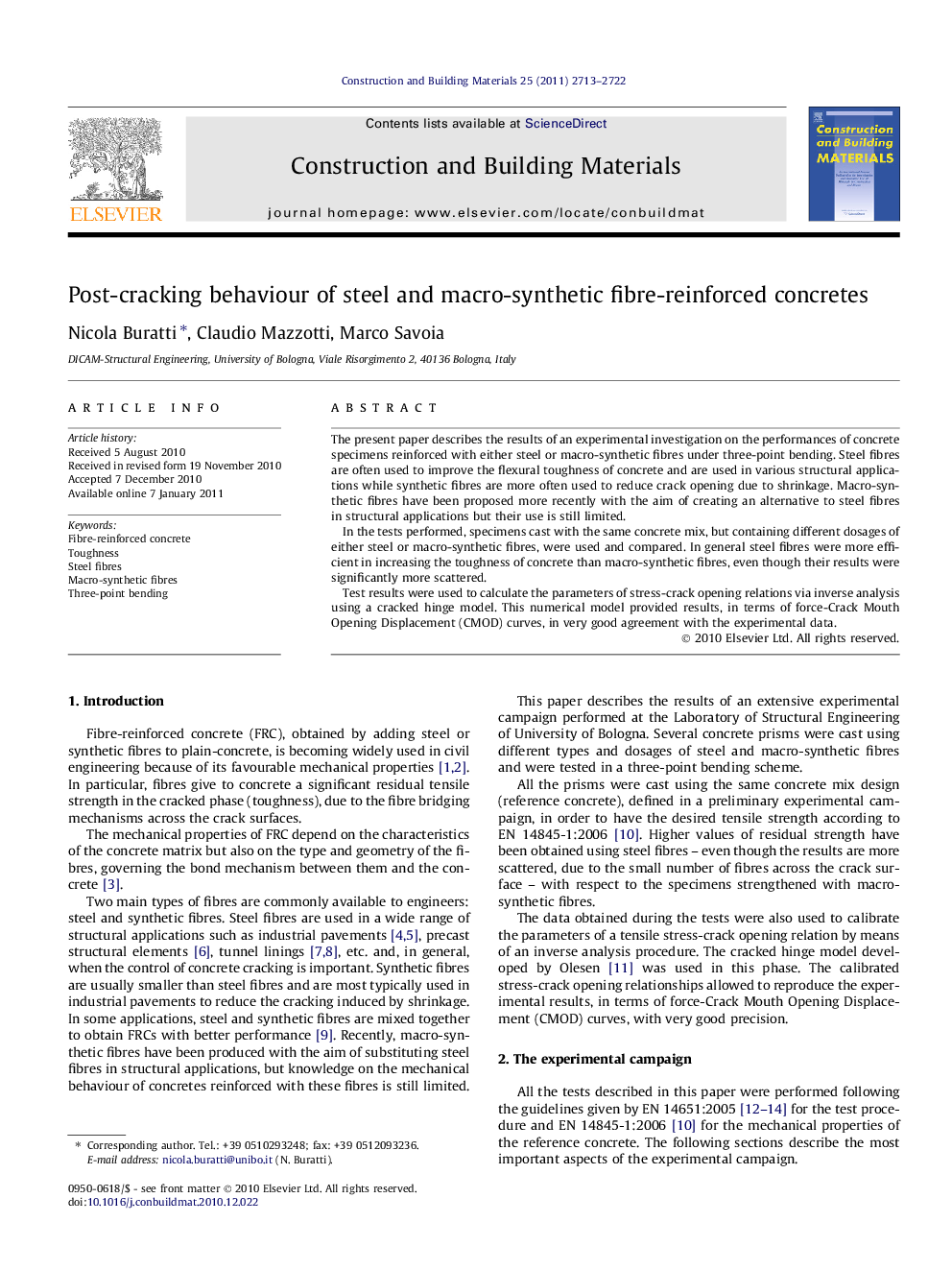| Article ID | Journal | Published Year | Pages | File Type |
|---|---|---|---|---|
| 259314 | Construction and Building Materials | 2011 | 10 Pages |
The present paper describes the results of an experimental investigation on the performances of concrete specimens reinforced with either steel or macro-synthetic fibres under three-point bending. Steel fibres are often used to improve the flexural toughness of concrete and are used in various structural applications while synthetic fibres are more often used to reduce crack opening due to shrinkage. Macro-synthetic fibres have been proposed more recently with the aim of creating an alternative to steel fibres in structural applications but their use is still limited.In the tests performed, specimens cast with the same concrete mix, but containing different dosages of either steel or macro-synthetic fibres, were used and compared. In general steel fibres were more efficient in increasing the toughness of concrete than macro-synthetic fibres, even though their results were significantly more scattered.Test results were used to calculate the parameters of stress-crack opening relations via inverse analysis using a cracked hinge model. This numerical model provided results, in terms of force-Crack Mouth Opening Displacement (CMOD) curves, in very good agreement with the experimental data.
Research highlights► We compare the performance of steel and macro-synthetic FRCs using three-point bending tests. ► We investigate the effects of fibre distribution on toughness. ► We find good correlation between fibres crossing the crack and residual tensile strength. ► We reproduce experimental results with a numerical model fitted through inverse analysis.
